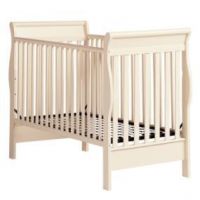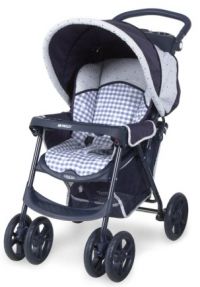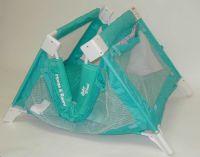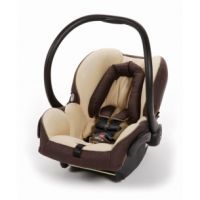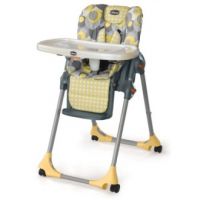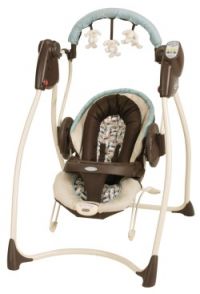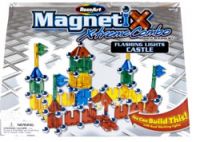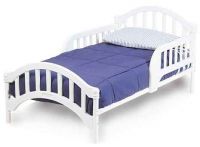TEST Student Projects
This page includes project ideas for engineering students to design with safety in mind as part of the Teach Early Safety Testing (TEST) curriculum. You can also view examples of prototypes created by students in response to these assignments.
Introduction
More than a hundred children’s products are recalled by the government as hazardous every year, and patterns have emerged among those myriad models and products. Namely, certain products are recalled at a far greater rate than others, due to either some inherent danger in the product or the fallibility of a particular design that has been picked up by several different manufacturers. The purpose of these projects is to challenge students to attempt to solve problems and create ideas that can be applicable to future designs. The following projects can be assigned to engineering students at any level.
Goal
- Students will become intimately aware with safety issues relating to one specific product and more aware of design safety issues in general.
Objectives
- Each student team will help develop a unique solution to a safety design hazard.
- Each student team will leave the project with an understanding of the dangers of unsafe products and how to evaluate products for hazards and develop possible design solutions.
- Each student team will know how to find and access information they need to design safe products.
Note: Information on all of these products, as well as general statistics, can be found at www.KidsInDanger.org and www.cpsc.gov. Students who have been assigned one of these projects are strongly encouraged to contact and meet with Kids In Danger in order to discuss specific ideas, previous attempts and product history.
The Projects
1) A Safe Crib
Problem: A crib is unique among child products in that it is intended to keep small children safe without any supervision. Despite this, about 50 children are killed each year by their cribs, along with 12,000 others who are injured in similar fashion. Today, cribs face the toughest product safety standards of all children’s products, yet many consumers are weary of buying newer cribs as they can be more expensive than older, often dangerous cribs.
Goal: Design a crib with enhanced safety features that has a decreased risk of harmful consequences for children. This design must include all legally required crib mandates and pay close attention to the market price of the completed design. Cribs must be affordable, easy to store and move. Most importantly, the product must deliver a safe sleeping environment for the child with new design features to appeal to parents.
2) Strategies for Preventing Latch Failure
Problem: In 2012, an estimated 12,900 children under age 5 were treated in hospital emergency rooms for injuries associated with strollers, according to CPSC Nursery Product Reports. Most of the injuries were caused by falls and almost 90 percent of those were head injuries. Many of these injuries are caused by ‘false latching’ where parents believe a latch is engaged because the stroller appears to be steady, but when a bump is hit, the stroller collapses. As a recall notice explained, “strollers can fail to latch properly and unexpectedly collapse while in use.”
Goal: Redesign the traditional lock and latch mechanism to create a new, easily secured strolled latch or completely restructure a stroller to provide a safe and accessible infant carrier while keeping in mind the needs and desires of parents. Devise sensory feedback that consumers can check in order to confirm that the stroller is properly latched or a stroller that will not work correctly if improperly latched, thus alerting the parents.
3) Developing a Safer Portable Crib
Problem: At least 16 babies have been killed when the side rail of their portable crib collapsed, forming a v shape that strangles the child. Other designs are currently made that do not allow for this hazard, but the resulting product is bulky and hard to carry.
Goal: Design a portable crib that does not allow a failure that results in a v-shape and can encompass a child’s neck leading to suffocation and often death. Designs must be compact and easily accessible as the model should still be portable and relevantly lightweight. A safe sleeping and playing environment for children ages 0 to 2 is the most essential and pressing consideration.
4) Developing Solutions to Handle Failure
Problem: In 2010 and 2011 respectively, 13,200 and 16,900 children were treated in the emergency rooms for injuries related to infant carriers and car seat carriers, this figure excludes injuries related to motor vehicle incidents according to CPSC. Hard-handled baby carriers are often recalled because the handle latching system fails. This can cause the seat to swing down and the occupant to fall or hit an object.
Goal: Devise a carrier that reduces the likelihood of this failure or the risk of injury.
5) Preventing Baby Monitor and Camera Injuries
Problem: Baby monitors have been recalled by the Consumer Product Safety Commission due to strangulation, overheating and even fire. Current standards only add warning to address potential strangulation hazards. These monitors, while intended to give parents peace of mind, actually introduced new hazards into the nursery. Additionally, wires that connect baby cameras to electrical outlets can become an entanglement hazard for children resulting in harm or even death. While battery operated products are a potential solution, many parents are unsatisfied with the limited life of a battery and the expense of constantly replacing used batteries.
Goal: Design a device that reduces the possibility that a monitor will lead to a fire and with limited exposed wires and cords to prevent other injury. Additionally the product must decrease the risk of strangulation by limiting dangling cords and wires.
6) The Problem with Bath Seats
Problem: Bath seats are small seats on which babies can be placed and secured. Some adhere to the tub with suction cups, others attach to the side of a tub. Bath seats are popular items because they allow parents to bathe their babies in regular bathtubs before the babies are capable of completely balancing themselves on their own. Between 2005 and 2009, 431 children under 5 drowned at home; most were under 2 years old. Eighty-three percent of those deaths were in the bath. In some cases, the suction cups have come loose, freeing the bath seat from the bottom of the tub and tipping it over. Trapped in the seat, many babies have ended up stuck face down in enough water to drown them. Most of the deaths have occurred when parents, overconfident in a bath seat’s ability to keep their baby safe, had left the room even for a few minutes
Goal: Design a bath device that decreases the likelihood of infant drowning and still meets the new tough standard.
Note: It is vital that your solution not induce a false sense of security in parents. Because it is never a good idea to leave babies unattended in water, the product design should incorporate methods to keep parents within arm’s reach.
7) Increasing High Chair Stability and Security
Problem: Each year children all over the country are injured by high chair structure failures caused by poor product design. According to CPSC Nursery Product reports, there have been at least 11,300 high chair related injuries among children under the age of 5 in 2012. Since 2007, more than 3.1 million high chairs have been recalled. Key problems include risk of falling due to restraint bar failure and loose hardware. plastic joints that can crack and cause the product to collapse in use, leg strap that could be pulled through enabling a child to fall, and inadequate fit between the seat and base, allowing the seat to slip or fall.
Goal: To design a high car that properly secures a growing child safety while moving around and eating to prevent fall and injury.
8) Addressing Injuries due to Infant Swings
Problem: Infant swings provide an alternative to cribs that can lull a fussy baby to sleep. However they also pose dangerous risks to the infant. A central concern is a falling hazard if the child slips into leg openings or if child becomes entangled in the harness straps. Additionally there is a risk of injury from falling if infants push themselves up and over the back of the seat, straps become unfastened or separate from buckles, or if the latch on carrying handle unexpectedly releases and causes the seat to flip forward.
Goal: Design an infant swing that provides a safe and comfortable environment for the child while reducing the likelihood an infant slipping from the carrier or the swing flipping forward or backward harmfully. The rocking motion should not endanger the safety of the child or increase the likelihood of an infant falling.
9) Magnetic Toy Concerns
Problem: Magnets products emerged as a serious issue in 2006. As of April 2013, CPSC has received 54 reports of children and teens ingesting this product, with 53 of these requiring medical interventions according to the recall press release for the adult marketed Buckyballs. Children’s magnetic toys including the Magnetix as seen above have also been recalled. Magnetic toys are extremely popular yet they create a dangerous ingestion hazard. When more than one is swallowed, they can attract, causing intestinal perforation, infection, and potentially fatal injuries.
Goal: Redesign magnet toys to decrease the likelihood of ingestion and the potentially life-threatening consequences of this product. This could include developing new casing for the magnets or other ideas are welcome. The goal is to use small powerful magnets that are encased in larger safe housing and still provide play value.
10) Toddler Beds Issues
Problem: Between 2005 and 2010, the CPSC received 122 reports of incidents involving toddler beds in which four children died and 43 were injured. Problems with toddler beds include entrapment of the limbs in the guard rail and mattress and between the slats in guard rails or footboard that may create risk of asphyxiation, broken bones, sprains and other injuries to young children. Additionally, there is a head entrapment risk if a child becomes entrapped in the headboard or footboard or in the spacing between the mattress and the headboard or footboard.
Goal: Design a toddler bed that can be practically and easily used by a child ages 2 to 5 addressing the serious potential of entrapment dangers while providing a safe and comforting sleep environment to a toddler.
11) Identifying Hazard Patterns and Design Solution
Problem: Between 2010 and 2011, over 155,000 children under the age of five are rushed to emergency rooms each year due to injuries from children’s products according to CSPC’s nursery report.
Goal: Use data from CPSC and other resources to identify hazards, and then determine if they can be designed out of current products. Prototype construction would require use of a shop.
12) The Word Out
Problem: When a product is recalled, the manufacturer issues a press release with the Consumer Product Safety Commission and notices are posted in stores. These methods rarely reach a majority of product owners, and in many cases, the CPSC will close the file on a certain product with 80% of it still in circulation. While increased technologic communication has dramatically improved the exchange of information between the manufactures and the public, the majority of people regularly are not aware when a product is recalled. Unless there is increased media coverage from a product recall due to a child’s death or other tragic circumstance, often the general public is left unaware of the recall and therefore continues to use the product.
Goal: Develop new ways to both improve the likelihood that the manufacturer can contact actual owners of the product in the event of the recall or can assure that those owners will hear of the recall through a variety of sources. For example, create a more effective way to track people who purchased any given product in order to inform them of recalls and other product dangers. It is important that your plan does not sacrifice personal privacy or impose a prohibitive cost on the manufacturer.
(Note: Project 12 is suitable for students enrolled in Computer Engineering.)

